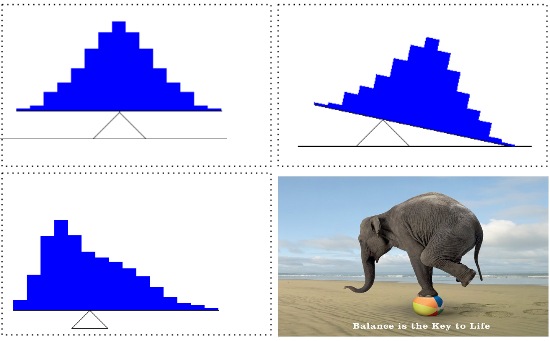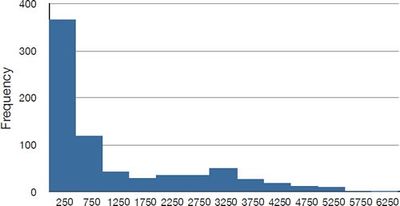Shapes of Distributions
Shapes of distributions can differ in skew and/or kurtosis.
Skew
Distributions with positive skew have
- tails that extend to the right.
- (normally) larger means than medians.
Example
- Histogram above shows the salaries of major league baseball players (in tens of thousands of dollars).
- It shows a distribution with a very large positive skew.
- The mean and median of the baseball salaries are $1,183,417 and $500,000 respectively.
- Thus, for this highly-skewed distribution, the mean is more than twice as high as the median.
Measures of skew
Pearson's measure of skew
The relationship between skew and the relative size of the mean and median led the statistician Pearson to propose the following simple and convenient numerical index of skew:
- The standard deviation of the baseball salaries is 1,390,922.
- Therefore, Pearson's measure of skew for this distribution is 3(1,183,417 - 500,000)/1,390,922 = 1.47.
Third moment about the mean
- Although Pearson's measure is a good one, the following measure is more commonly used.
- It is sometimes referred to as the third moment about the mean.
Kurtosis
The following measure of kurtosis is similar to the definition of skew. The value "3" is subtracted to define "no kurtosis" as the kurtosis of a normal distribution. Otherwise, a normal distribution would have a kurtosis of 3.
Quiz




